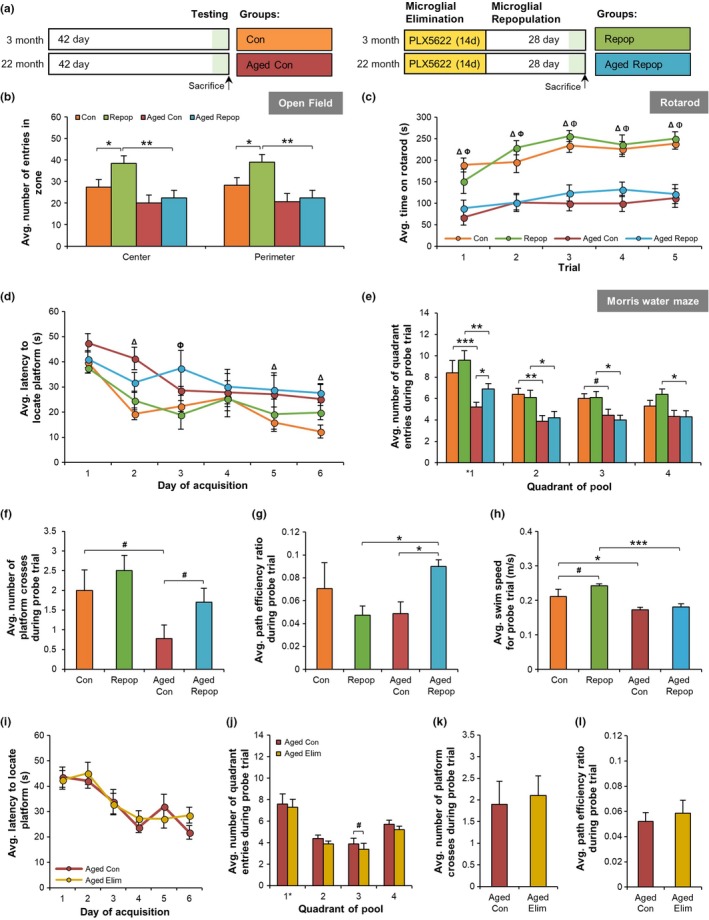Figure 1.

Microglial Replacement Improves Cognition in Aged Mice. (a) Experimental design for (a–h). Treatment groups are as follows (n = 8–10 mice/group): young control (Con), young microglia‐repopulated (Repop), aged control (Aged Con), and aged microglia‐repopulated (Aged Repop). (b) Open field analyses of number of line crosses between the center zone and the perimeter. (c) Rotarod performance. (d) Acquisition data from training days 1–6 of the Morris Water Maze. (e–h) Morris Water Maze probe trial, conducted 24 hr after the last training trial showing the number of correct quadrant entries (e), platform crosses (where * indicates the location of the platform during acquisition) (f), path efficiency (g), and swim speed (h). (i–l) Aged (~22 months) mice were provided control chow or PLX5622 (1,200 ppm in chow) for 14 days to eliminate microglia, the same timeline used in (a). The following treatment groups were: Aged Con and aged eliminated (Aged Elim) (n = 10/group). (i–l) Morris Water Maze performance for acquisition (i), latency to locate the platform in probe trial (i), the number of platform crosses during the probe trial (k), and the path efficiency during the probe trial (l). Data presented as means ± SEM. Statistical significance indicated as *p < 0.05, **p < 0.01, and ***p < 0.001 with statistical trends as # p < 0.10. Comparisons for (c) and (d): ΩCon versus Repop; ΔCon versus Aged Con; ΦRepop versus Aged Repop; ΨAged Con versus Aged Repop
